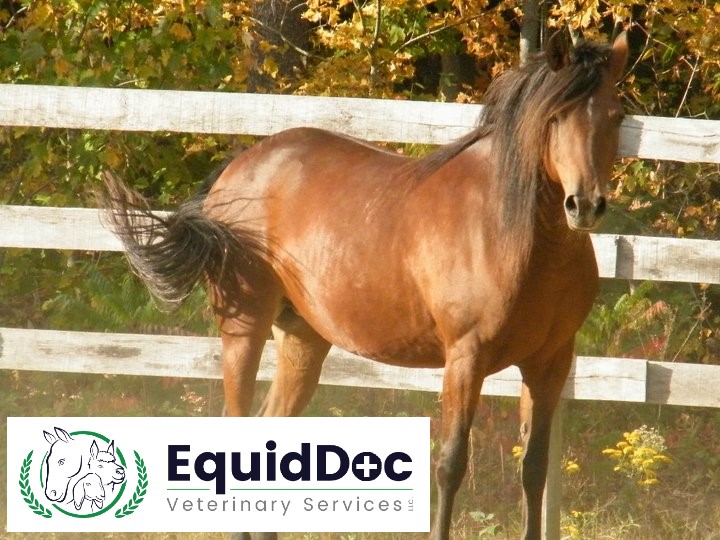Have you dreamt about a perfect foal floating across your pasture alongside your mare!? Well, here’s what you need to know:
- Is your mare healthy enough to be bred?– good body condition (5 or 6/9) is crucial; too thin won’t cycle, too fat won’t conceive. No other disease (PPID aka Cushing’s disease) and no lameness at the walk should be present.
- What are you looking for in a stallion?– your goal is to better the breed, not just make a foal, so communicate with the stallion owner and those that have used the breeding stallion before to make sure the stallion’s traits complement your mare’s.

- Breeding soundness examination by a veterinarian is highly important for early identification of potential issues or risks that could affect your mare’s ability to conceive, maintain the pregnancy, and deliver.
- Does the stallion owner require specific testing & vaccines before breeding? Some stallions require specific testing such as a negative uterine culture prior to accepting the mare for breeding. If your mare is going to a breeding facility, she may require vaccinations that you do not routinely do such as strangles, rhinopneumonitis, and influenza.
- Have you seen your mare display signs of heat? Breeding, whether through live cover or artificial insemination, should occur as close to ovulation as possible. To do this we must track a mare’s heat cycle. Your mare has a 21-day cycle, she will be in “heat” for roughly 5-7 days and will ovulate in the last 24-36 hours of heat. Therefore, your identification of the start of a heat cycle in your mare allows the veterinarian an opportunity to come out to ultrasound your mare and help you determine when to breed. Signs of heat include vulvar “winking”, frequent urination, and tail raising.
- Is your mare a maiden? Mares that have not had a foal before are generally challenging to get pregnant. Fertility in all mares is usually highest from April through June.
- Danger– No procedure or process is ever without risk, including the breeding and foaling process. Any rectal examination (for ultrasound, palpation, or insemination) can result in a rectal tear that could be life-threatening. A pregnant mare can have complications arise such as a uterine torsion (twist), or ruptured ligaments or blood vessels. Foals can be in the wrong position at the time of foaling (dystocia) which can be life-threatening for both the mare and the foal. A mare may sustain trauma from foaling as well, including bruising, nerve damage, tears, and bleeding. Some traumas may be serious to life-threatening.
- What breeding method will be used? – If using artificial insemination – the type of semen available, cooled semen or frozen semen, will determine the preparation of your mare and the timing of the insemination. When breeding on the farm, cooled semen is generally preferred over frozen due to logistics and cost.
- Budget– the cost of the stud fee is sometimes a small percentage of the overall expense, and often nature does not follow the playbook, so be sure to factor in extra resources for unanticipated expenses like an extra round of breeding or treating a uterus that has excess fluid. Also, be prepared that newborn foals can sometimes have health complications that require medical treatment adding to the overall cost of breeding a healthy foal.
- Set up for foaling?– Although you will have 11 months to make plans, that time goes by quickly. Do you have the space for your mare to foal out at your farm? Do you have a reservation (and a backup plan too) for a facility that handles foal watch and foaling out? Also, remember the foal you are creating could be around for 30 years…are you prepared for that?


